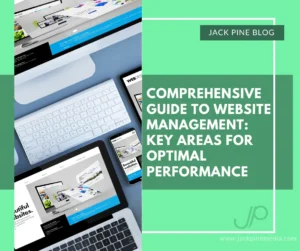Google Analytics has been a staple in the world of digital analytics, providing businesses with valuable insights into their website performance, user behavior, and marketing efforts. However, with the introduction of Google Analytics 4 (GA4), businesses now face the task of transitioning from the familiar Universal Analytics (UA) to the new and advanced GA4 platform.
But what does this transition mean for your business? Read on to know more.
Enhanced User-Centric Approach
One of the key differences between UA and GA4 is the shift towards a more user-centric approach. GA4 places a greater emphasis on tracking and analyzing individual user behavior, allowing businesses to gain deeper insights into user journeys and interactions across multiple devices and platforms. This user-centric approach enables businesses to better understand their audience and tailor their marketing strategies accordingly.
Advanced Tracking Capabilities
GA4 introduces advanced tracking capabilities that go beyond the traditional pageview-centric tracking of UA. It leverages an event-based model, allowing businesses to track specific user actions, such as button clicks, video plays, form submissions, and more. This granular tracking provides a more comprehensive view of user engagement, enabling businesses to optimize their website and marketing campaigns based on specific user interactions.
Deeper Integration with Google Marketing Platform
GA4 offers enhanced integration with the broader Google Marketing Platform, providing businesses with a more seamless and holistic view of their marketing efforts. With GA4, you can easily integrate data from Google Ads, Google Optimize, and other Google marketing tools, allowing for better cross-channel attribution and optimization.
Machine Learning and AI-Driven Insights
GA4 harnesses the power of machine learning and artificial intelligence (AI) to provide businesses with actionable insights and predictive analytics. It offers features like automatic event tracking, predictive metrics, and AI-powered insights that help businesses uncover valuable patterns and trends in their data. These AI-driven capabilities enable businesses to make data-informed decisions and optimize their marketing strategies for better results.
Prepare for the Future
Transitioning to GA4 is not just about the present; it’s about future-proofing your analytics setup. As Google continues to invest in GA4 and phasing out some features in UA, embracing GA4 ensures that your business remains aligned with Google’s evolving analytics ecosystem. By making the transition early, you can stay ahead of the curve and take advantage of new features and updates as they become available.
GA4 Reports
Navigating the changes from Universal Analytics to Google Analytics 4 (GA4) can bring challenges in finding familiar reports and features. While Google has made improvements in providing more out-of-the-box reporting options, there are still adjustments required, such as accessing Google Ads campaign metrics and creating custom reports.
The transition presents an opportunity for freelancers and agency PPC professionals to showcase their expertise in new report creation. Embracing the learning curve of GA4’s reporting suite allows businesses to benefit from evolving capabilities and make data-driven decisions. Despite the disruptions, there is room for growth and innovation.
Data-driven Attribution
GA4’s default attribution model brings disruptions and discrepancies in channel reporting, causing slower report generation. However, it is a more accurate method of crediting conversions by considering the complex user journey across various touchpoints. Although it relies on trusting Google and has some “black box” elements, it offers a better reflection of the user journey compared to the last-click attribution model. Data-driven attribution is not new to Google, as it has been the default attribution model in Google Ads for some time. The main difference is that Google Ads only attributes across Google channels, while GA4 expands across all channels. Despite occasional confusion regarding fractional conversions, businesses will be familiar with this approach and its benefits.
Trust the Professionals
As businesses navigate the challenges and learning curve of transitioning to GA4, embracing this new analytics tool holds great potential for significant benefits. It requires patience and perseverance to adapt to the changes, but the rewards are worth it.
In this journey, PPC marketers play a vital role in guiding and educating businesses, helping them understand the enhanced data analysis capabilities and addressing any concerns. By showcasing the potential of GA4 and assisting stakeholders in navigating the platform, marketers can lead businesses towards a future of data analysis with enthusiasm, leaving behind the limitations of UA.
If you’re looking for guidance and expertise in digital marketing, our team of experts at Jack Pine Media is here to help. We stay up-to-date on industry trends and possess the latest knowledge and techniques. Schedule a FREE marketing evaluation for your business today and let us assist you in assessing and enhancing your website’s performance, ensuring you stay ahead of Google Updates. We proudly serve the Washington and Idaho areas, including cities such as Spokane, Post Falls, Hayden, Liberty Lake, and Coeur d’Alene.



